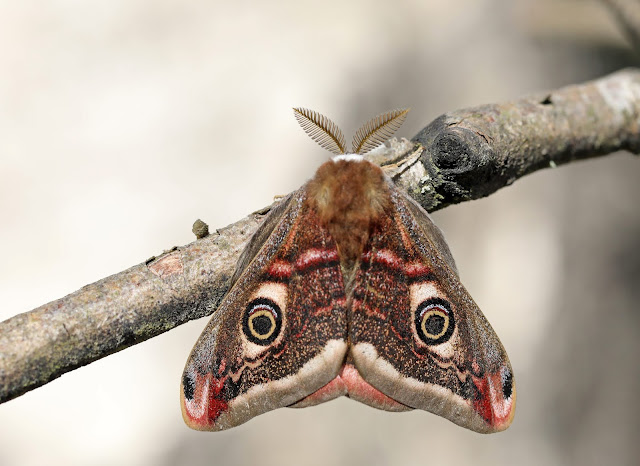After such a long break it is difficult to put virtual pen to virtual paper, I am not sure why, as I haven't stopped going out into the countryside and I haven't stopped taking photographs. However the last two visits have galvanized me into action, whether I can maintain it remains to be seen.
Two trips this week - the second first as it were. Yesterday we went east for the first time in what seems ages. With decent morning light, a high tide and fairly calm conditions we figured that a visit to Newhaven would produce something of note. Well, I would call it disappointing, others may have a more earthy description. Apart from a few sedentary gulls, vociferous Jackdaws and a host of feral pigeons, which Martin was tempted to log as Rock Dove, there was very little to be seen. The wide expanse of calm water in the harbour was also empty - not a single entity bobbing on the briny.
Onward, ever optimistic, to Seaford Head where, thank goodness we found several Rock Pipits. Alas the sea was almost empty, the only occupant was an obviously fit lady taking a dip in the high water. Martin remarked that it might be a tad cool but then, sensing the chill north wind that was blowing offshore, observed that actually the water temperature may be slightly higher than that of the air. On round to the car park above the golf course, where we found a plethora of corvids, Jackdaws, Rooks, Crows and a high flying Raven.
Next stop - Friston Forest where on previous winter visits we have managed to find the odd Brambling hiding within some flocks of Chaffinches. Success! We found a medium sized flock keenly rummaging for beechmast amongst the leaf litter and three Bramblings with them. With a bit of planning we managed to get into a position to take a few record shots. Conditions for photography were pretty poor, mainly due to the fact the canopy is still present, most trees still carrying a lot of leaves. Pushing the ISO up to a silly number resulted in several acceptable shots of a bird that seldom presents photo opportunities in our neck of the woods.
Earlier in the week we had ventured west to East Head at Wittering, ostensibly to find a lone Snow Bunting, but mainly as we hadn't been there for some time. I had forgotten how bad the place can be, the blight being the presence of so many dog walkers and dogs, on a leash or not. Of course there are pleasant memories of the place, mainly in deepest winter when people are thin on the ground and the large number of Brent Geese and plovers provide undisturbed photo opportunities.
Anyway I digress, we circumnavigated the Head, making the odd foray into the dunes but no sign of the bird. Making our way back to the car we suddenly came upon the bird, just a few feet from Martin's car and we almost trod on it. As it flushed and landed quite calmly, hardly ten feet away, we hastily got the cameras out, fearful that it would disappear from view. Not a bit of it, this most obliging bird went to feeding amongst the grass and very little spooked it. We stayed for over an hour and became "guardians" as we asked walkers who came close not to flush it. I have to say without exception all avoided the bird and most showed an interest as to what it was and whence it came.






















































